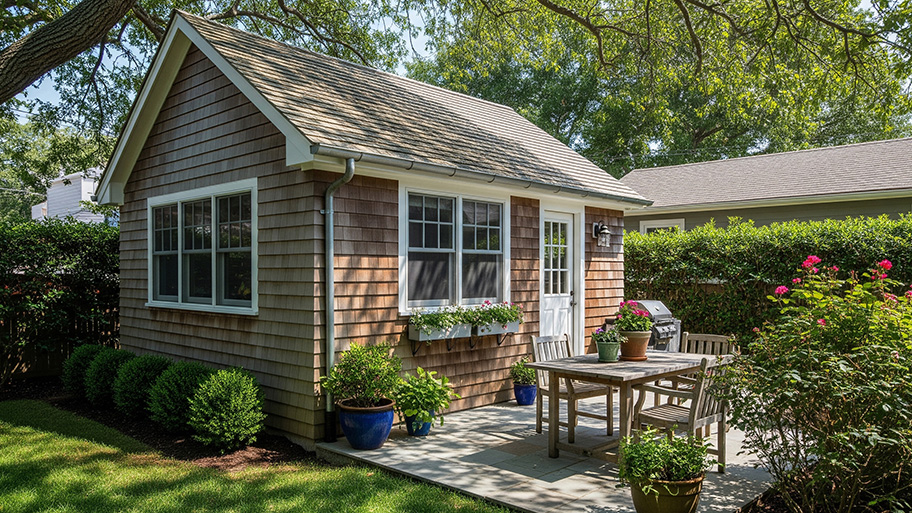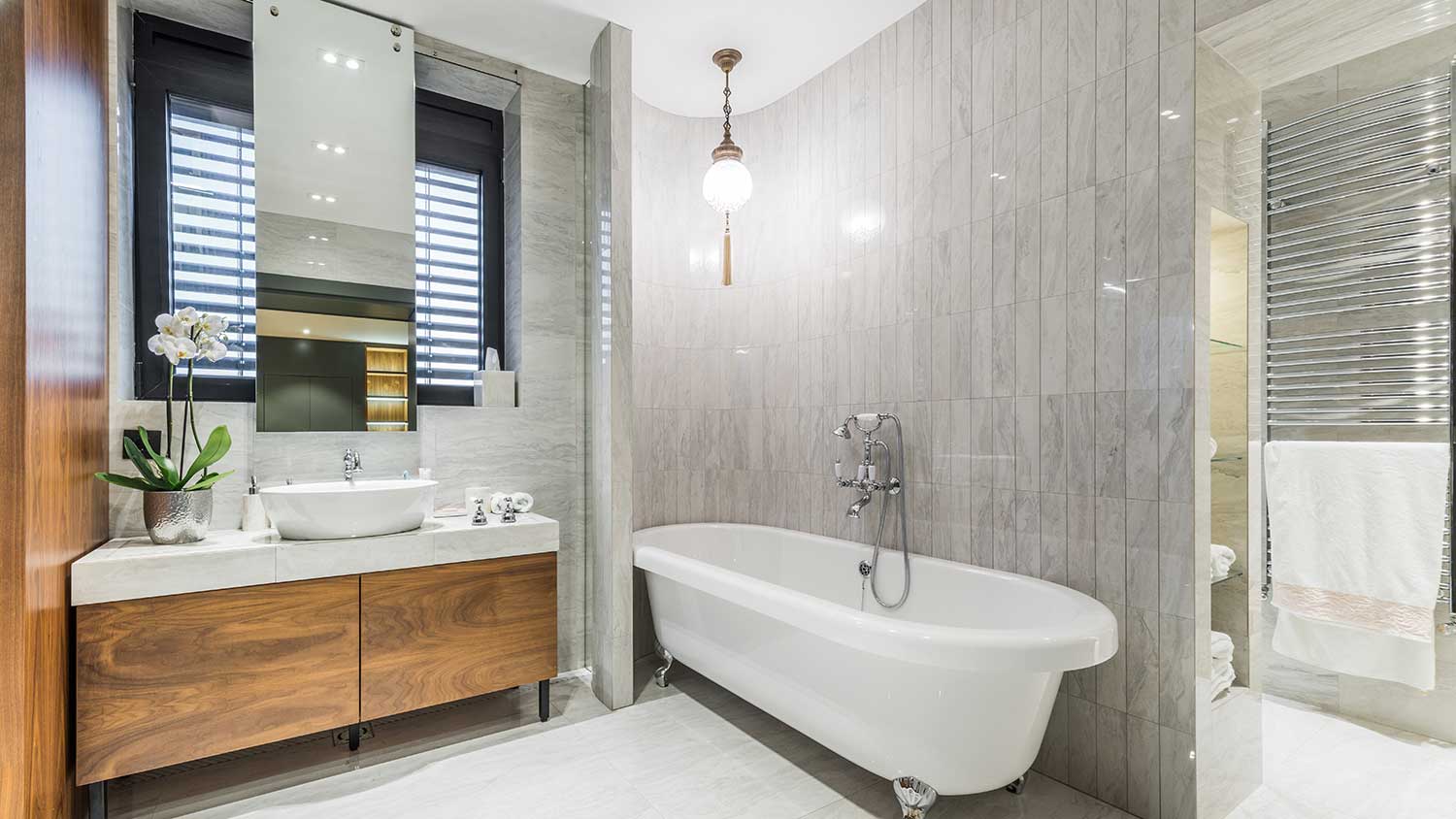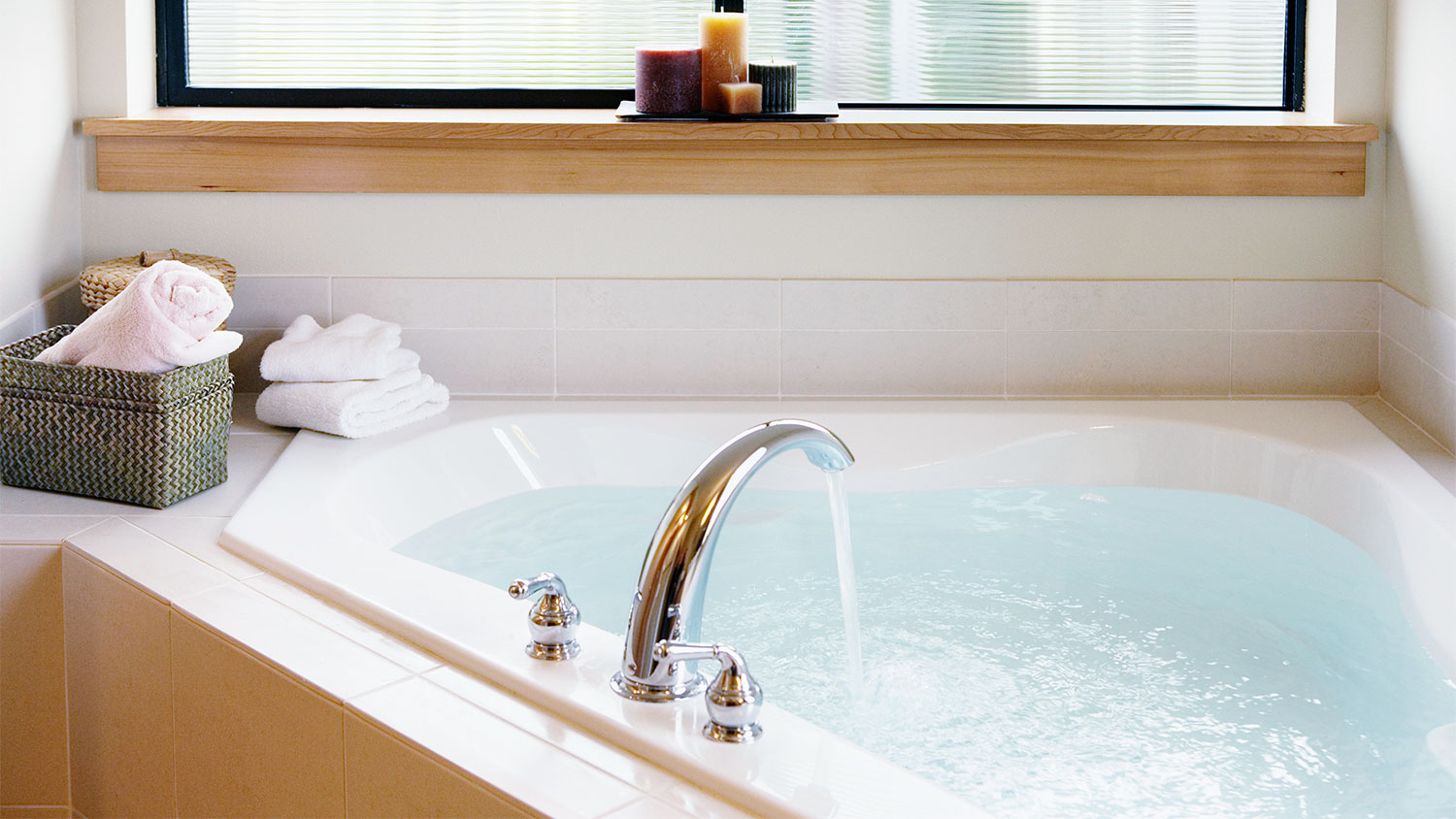
Building a laundry room addition to your home adds value and functionality. Your laundry room addition cost will depend on size, materials, and other factors.
Plan your perfect bathroom


Consider bathroom size and shape when choosing a layout.
The average bathroom in the U.S. is 40 square feet.
The most cost-effective layout features a single plumbing wall.
It’s no surprise that, next to the kitchen, the bathroom is the most-used room in the house. It’s also the place where functionality is priority number one. How you and your family members move from sink to tub to toilet can make or break a morning routine—and diminish the relaxation you get from a long soak or shower.
It’s why your bathroom layout is so important. And it’s more flexible than you think, no matter how much room you have to work with. Whether you’re starting fresh or tweaking the space you have, there’s a layout to meet your needs. So get out your measuring tape—and start here with these bathroom layout ideas.
There are essentially three types of bathrooms: primary (usually the owner’s bath, frequently adjoining the primary bedroom); the guest (often ensuite) bath; and powder room (a sink and toilet only).
From there, the layout options—including size, shape, and plumbing—are endless.
While size surely matters when deciding on a bathroom layout, it doesn’t always follow that bigger is better. Consider that the size of an average U.S. bathroom is 40 square feet—relatively small, but roomy enough for the basics.
If your existing bath is larger (or if you’re starting from scratch and can allocate 100 square feet or more), the good news is you can design a spa-inspired bathroom. Picture twin sinks, a freestanding tub, separate shower, a toilet (usually behind closed doors), and a bidet—plus a bench or pouf, dressing table, and full-length mirror, if you like.
But before adding too many bells and whistles, be sure to consider how you really use your bath (and who you share it with). Don’t forget that large, luxury layouts almost always come with more upkeep and a higher price tag.
The shape of the room will dictate where you can safely fit bathroom fixtures and accessories. Most of the time, these fixtures have standard dimensions that tend to fit well in traditional square- and rectangular-shaped bathrooms.
Unusual layouts allow for more creativity, but they can be confining as well. An odd-shaped space often has more than its share of nooks and crannies, which can be tricky to work around.
Plumbing is a major consideration. Large baths that feature multiple sinks on different walls and separate tubs and showers require more complex plumbing systems than small ones. Compact baths—where all of the fixtures are lined up against one wall—can be very efficient, not to mention cost-effective.
In the case of a remodel, you can save money if you keep all the hookups and drains intact. On the flip side, if you rely on existing plumbing, you limit the number of creative solutions available to you. If you go this route, converting a tub to a walk-in shower is a popular update.
At the end of the day, consider size, cost, complexity, and your changing needs to determine if the time is right for an overhaul.
When you’re narrowing down your bathroom layout ideas, consider the location of the door. A door will take usable space away from part of the room—especially if your door swings open. You don’t want a door blocking fixtures like your toilet or creating an awkward space you need to slink around to enter.
To meet ADA standards, the clear width of your door opening must be at least 32 inches. Your door width should be 34 inches, but it can be as low as 24 inches if your walls don’t allow for a larger door.
If you have a particularly small space, you may want to replace hinged doors with sliding or folding doors during your bathroom remodel. These types of doors maximize the usable square footage and limit the chance a door will interfere with a fixture.
It’s always a good idea to keep bathroom remodel costs in mind when planning your layout. Some layouts can significantly increase costs depending on your existing space. For example, if you need to knock down a load-bearing wall to make things work, that could add anything from $1,200 to $10,000 to your project.
If you need to move your vent stack to accommodate your new bathroom, you could spend $5,000 to $10,000. Even moving around plumbing can cost a couple (or several) thousand, depending on what needs to be done.
Windows are a big consideration when it comes to bathrooms so you can protect your privacy. A lot of bathrooms are tucked into corners without windows (especially in apartments). In this case, prioritize your light fixtures for a brighter space.
If your bathroom does have windows, some of the best modern bathroom ideas maximize natural light while maintaining privacy. For the most privacy, make sure you install your toilet away from your window’s line of sight. Windows above shoulder height usually work well, especially in showers to help vent the steam.
Additionally, choose frosted glass, rain glass, or some other type of privacy glass so passerbyers can’t see inside. This ramps up privacy no matter where your window is located.
Don’t underestimate bathroom storage—especially in a small bathroom. If you're already running low on closet real estate, you may want to plan for more than just a medicine cabinet. Shelving, a vanity, or a storage console can really make a difference.
For layouts without a lot of floor space, a large mirror with behind-the-mirror storage packs a punch. You may even want to cut into the wall and install a closet (if it’s possible). A reach-in closet typically costs $500 to $1,500 but can solve any issues you have with bathroom clutter and linen storage. Keep in mind, a closet, console, or wardrobe will need door clearance too.
The best bathroom layout ideas are the ones that suit your personal needs. Before you decide on your design, think about what you really want in a bathroom. Make a list of needs and a separate list of wants to help you prioritize.
For example, do you want to budget space for a double vanity because you’re sharing the bathroom with a partner? Do you need an ADA-compliant bathroom to fit a walker or wheelchair? Do you want to maximize space with a corner shower stall, or is your priority a full-sized, spa-like walk-in shower? Think about your lifestyle and make sure it works with your bathroom design. Here are some needs to consider:
Who is primarily using the bathroom
When or how you will use the bathroom
The type of shower and bath (if any)
The type of toilet
The type of vanity or sink
ADA requirements and features
Bathroom accessories
Decor like mirrors or artwork
Are you a maximalist or have you really gotten into the cottagecore trend? You can use your preferred bathroom design style to help you plan the layout. For example, a French country-style bathroom would suit a smaller console sink and claw-foot tub, but if you’re looking for the serenity of minimalism, you may want to add a streamlined vanity with a glass-enclosed walk-in shower.
Design style impacts everything from the height of your bathroom wainscotting and the color scheme to the size and shape of key features. With so many options, it’s a good idea to nail down your vision before designing your space. If you don’t know where to start, try to pick a color palette and then search for inspiration online and in magazines. Specific palettes tend to fit particular styles.
Today’s bathroom fixtures come in a wide array of sizes, but there are some standard (aka minimum) dimensions to keep in mind as you develop your bathroom plan, no matter its scope.
Standard bathtub: 60 inches long and 30 inches wide. A soaking tub usually requires a footprint of 72 inches by 36 inches.
Basic shower: At least 36 inches square.
Single toilet: Between 27–30 inches deep, with a back height of 21–31 inches and a width of about 20 inches.
Double vanity: 5 feet minimum, but 6 feet is preferred.
The National Kitchen and Bath Association (NKBA) and International Code Council (ICC) both publish planning guidelines to help create bathrooms that are both functional and safe.
Individual building codes may trump these guidelines, but they can be very helpful as you begin to plan your bathroom layout.
Entry doors: 32 inches wide or more.
Ceiling height: 80 inches at minimum in front of fixtures.
Sink: at least 20 inches to the closest wall.
Twin sinks: At least 36 inches between centerlines.
Vanities: between 32 and 34 inches high.
Toilet: centerline between15 and 18 inches from any fixture or wall.
Water closet: (toilet behind closed doors) needs a 36-by-66-inch space.
Whether you plan to DIY your remodel or hire a local bathroom remodeling contractor, it’s always smart to have a layout idea ready to share. Use these layout guidelines to create your dream space, whether it’s a classic bathroom with a clawfoot tub or spa-inspired room with a smart shower.

Fitting bathroom fixtures into a space of any size can feel a bit like working on a puzzle. On the other hand, there are dozens of ways to solve a bathroom layout dilemma.
We selected five popular designs that best represent different configurations, all with pros and cons. Remember, they can all be tweaked. Use these layout ideas for inspiration, then consult a bathroom designer near you to plan your unique space.

This 40-square-foot design is timeless because it works. The door opens easily, revealing a row of fixtures (sink, toilet, tub) all plumbed on the left-hand wall. This compact rectangular layout is simple and inexpensive to install. The downside is it doesn’t afford tons of counter space.

With a reasonably small footprint of under 100 square feet, this roughly 8-by-10-foot design is perfect for a no-frills guest bathroom. The door swings open directly opposite a window, with fixtures installed on both sides.
There’s room enough for twin sinks and open shelving (or a dressing table) on the left, with the tub, toilet, and small linen closet on the right.

This approximately 130-square-foot design puts a freestanding tub—every designer’s darling—on display. Double doors open to reveal a tub in the center of the space. Twin sinks on the left and a toilet plus a two-person shower on the right complete the showstopping layout.
This design celebrates the bath-as-ritual, although some detractors might say the area surrounding the tub isn’t used to its best advantage.

A Jack and Jill bathroom is the best idea in a shared space since bunk beds. This mirror-image layout can be designed within a 120-square-foot space, and accessed from bedrooms on either side.
Siblings (or guests) can easily share the twin sinks on one wall; the tub and toilet on the other, with pocket doors all but eliminating traffic snarls. Two points of entry can sometimes lead to privacy issues, so good locks are essential.

This generously scaled self-care sanctuary is only one of dozens of bathroom layouts designed to mimic what you’d find at a luxury spa. Enter the butterfly-shaped space at an angle, across from the oversized shower flanked by wide vanities.
As you enter, a soaking tub sits to the right of the door; a toilet with a pocket door and a linen closet are to the left. This layout evokes elegance and luxury, with no downside we can see.
Mariel Loveland contributed to this piece.
From average costs to expert advice, get all the answers you need to get your job done.

Building a laundry room addition to your home adds value and functionality. Your laundry room addition cost will depend on size, materials, and other factors.

Accessory dwelling units can be a smart investment, but your ADU cost will depend on the size, type, and materials you choose. Here’s how it breaks down.

A bump-out addition is right for you if you want to add extra space to your home without adding a new room. Learn about the different bump-out addition costs.

An updated bathtub can give a bathroom a whole new look. Find out how much it costs to replace a bathtub in Houston, TX, including prices by type and labor costs.

An updated bathtub can give a bathroom a whole new look. Find out how much it costs to replace a bathtub in Charlotte, NC, including prices by type and labor costs.

An updated bathtub can give a bathroom a whole new look. Find out how much it costs to replace a bathtub in Kansas City, MO, including prices by type and labor costs.